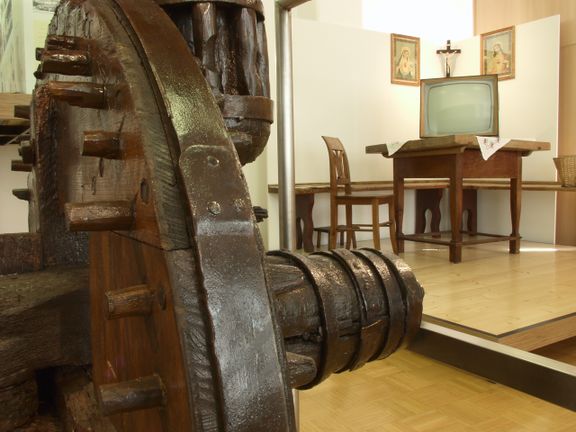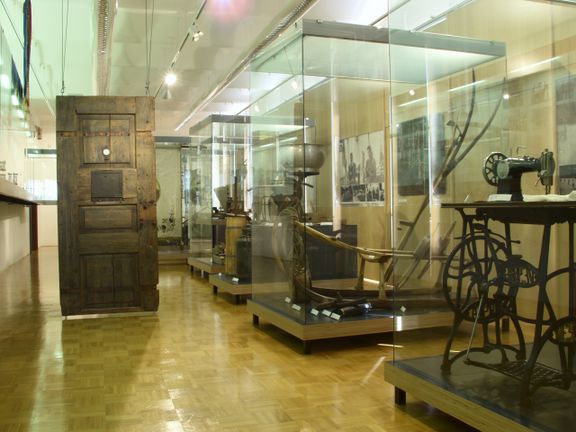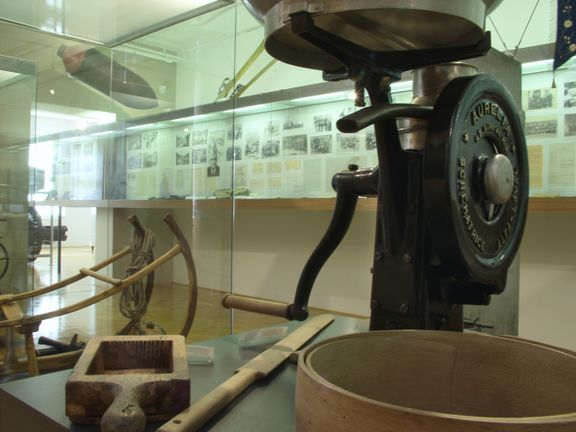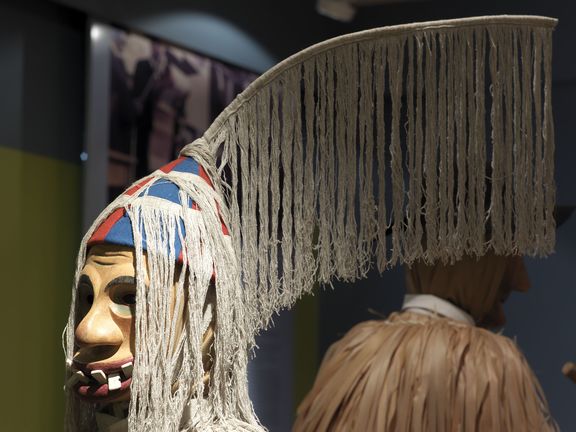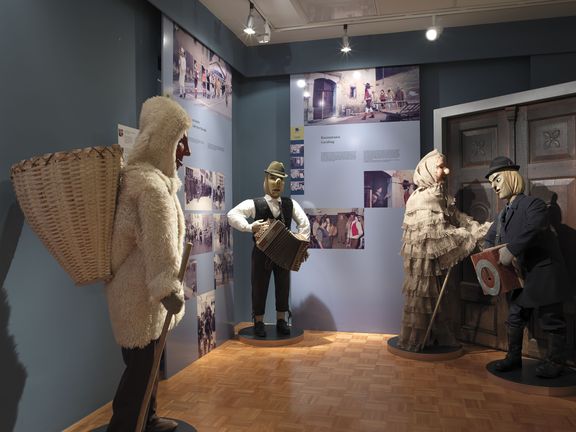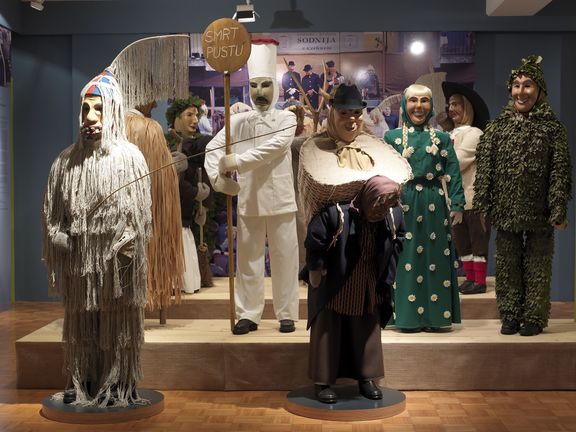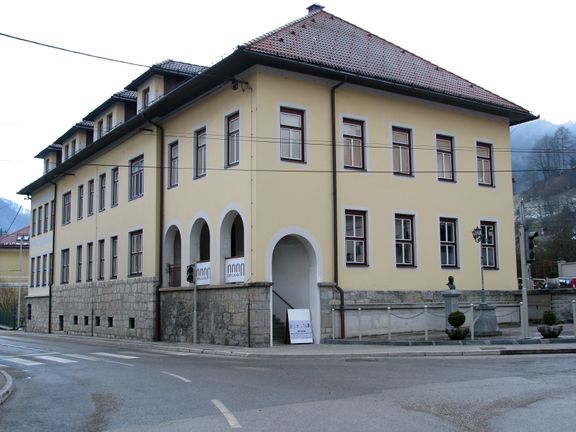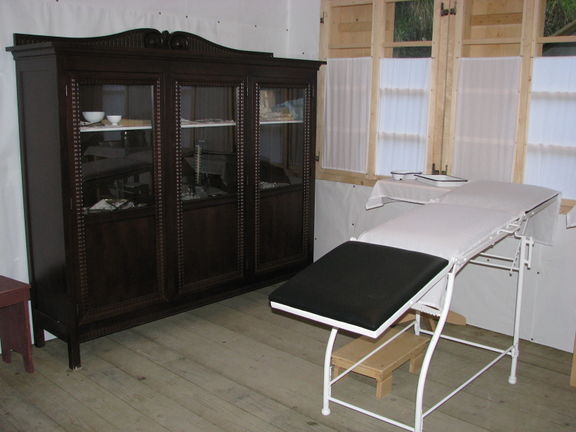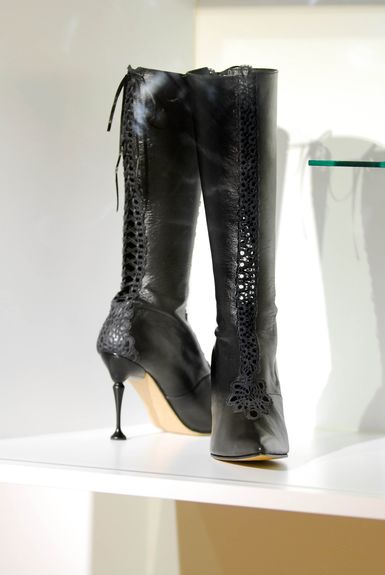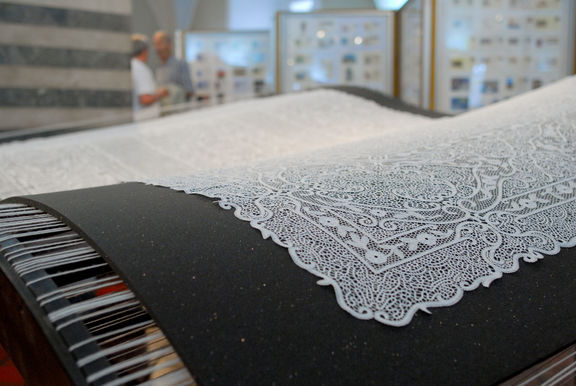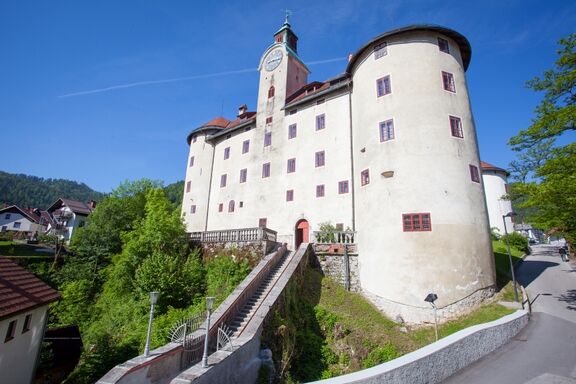Idrija Municipal Museum
Past events
-
to
31 Oct 2016
16 Dec 2016
USAWashingtonEmbassy of the Republic of SloveniaThe exhibition Idrija – Town of Lace and Unesco Heritage, curated by Ivana Leskovec and Mirjam Gnezda Bogataj and organised in cooperation with the Idrija Municipal Museum and Embassy of the Republic of Slovenia in Washington,
-
19 Jun 2015
United KingdomBristolThe Watershed CinemaA screening of Connected by Thread, directed by Matjaž Mrak and produced by Friendly Production for Idrija Municipal Museum, at the 14th RAI International Festival of Ethnographic Film
-
to
7 Nov 2014
17 Dec 2014
ItalyTrieste/TrstMuseo RevoltellaSmuggling Anthologies, an exhibition and conference featuring Tanja Žigon, Božo Repe, Tomaž Pavšič, and Franc Trček, EU funded project led by Museum of Modern and Contemporary Art (MMSU) in Rijeke, Trieste Contemporanea, and Idrija Municipal Museum
Exhibitions in Gewerkenegg Castle
The central museum exhibition, Five Centuries of the Mercury Mine and the Town of Idrija, presents the development of the town of Idrija and 500 years of the second oldest and largest mercury mine in the world. While operating, the mine produced one-eighth of all mercury globally.
The Collection of Rocks, Fossils, Mercury Ores, and Minerals, with nearly 3,000 different specimens, is the largest exhibited collection of its kind in Slovenia. Documents Tell the Story and View of the Town in the castle's front tower showcase a selection of significant European archival sources, along with documents from Idrija cartographers and mine maps from the 18th and 19th centuries.
The Mercury Tower is the highlight of the exhibition. It is designed like a shaft with three levels. Each level presents different symbolic values in the life of the miner. The first level displays equipment, methods and customs before entering the shaft; the second level showcases work conditions, tools and miners in the 17th century; and the lowest part features a 320 kg transparent Plexiglass cube with drops of mercury hanging in the air on iron wires.
Famous Personalities presents portraits and documents relating to the workers, intellectuals and mining experts who influenced Slovenia's and Europe's science and culture. Notable figures include naturalists Scopoli, Hacquet and Paracelsus, who lived in Idrija.
The process of extracting mercury and cinnabar is illustrated in a room with a massive millstone used for grinding cinnabar, clay retorts for smelting ore and original mercury scales from 1830. A vital mining support industry is forestry, and Idrija is surrounded by hills and forests that were cut for shaft support and mining architecture for centuries. Wood was also exported, and the Idrijca River and its tributaries served as transport routes. Architectural and technical solutions are vividly presented through various models of water dams, barriers and water rakes designed to pool incoming wood. The facilities shown in the models can still be visited in the town of Idrija and the surrounding areas.
The Heartbeat of the Bourgeois Idrija highlights the vibrant social and cultural life in historical Idrija. The Idrija Brass Music Association, with over 350 years of tradition, has a permanent tribute in the museum. Mining operations led to the establishment of several high-quality local schools and craft traditions such as lace-making. Bobbin lace-making was introduced into Slovenia from the Czech and German lands of the Austro-Hungarian monarchy over 300 years ago, with the first mention dating back to 1696. Idrija gradually developed its own techniques and design patterns, establishing a lace school in 1876, which achieved European dimensions. Lace, like mercury, was exported worldwide.
The Memorial Room of France Bevk, a famous Slovenian writer, was donated by his wife after his death in 1971. That same year, his study was moved from Ljubljana to the museum's permanent exhibition at Gewerkenegg Castle.
A relief model of the Partisan Hospital Bolnica Pavla, a lesser-known but significant hospital where more than 1,600 Partisans were treated, is on display in the Idrija Municipal Museum.
The Flow of Knowledge and Goods; the Heritage of Mercury is one of the newest exhibitions. Since the 17th century, mercury from Idrija and Almadén primarily travelled across the Atlantic to the Spanish mines of the New World. From Idrija to the United States, mercury was transported in special steel bottles, travelling up to 10,000 kilometres and taking up to five months to reach its destination. In American mines, it was used in procedures for extracting gold and silver, which then returned to Europe in the form of bars or coins. Knowledge of metallurgy accompanied these goods. Unfortunately, the processes associated with mercury have heavily polluted the environment. In the past 200 years, the rate of mercury in the atmosphere has tripled. In 2013, awareness of the serious environmental effects led to the creation of the Minamata Convention, a document aimed at protecting global health and the environment from mercury's effects. Since 2011, Europe has banned the use of mercury.
The exhibition Idrija Lace, A History Written in Thread traces the origins of bobbin lace in Europe and the development of Idrija lace. Most likely, the wives of German and Czech mining experts brought lacemaking knowledge to Idrija in the second half of the 17th century. Here, lacemaking spread rapidly and gained prominence both in the town and the countryside. Idrija lace features various techniques that have grown and improved over time. To help women create lace more efficiently and of better quality, trading companies encouraged the establishment of a lace school in Idrija. Operating continuously since 1876, the lace school preserves and develops lacemaking knowledge with around 400 students per year. In the second half of the 20th century, the role of lace began to transform, becoming increasingly popular as a highly respected ceremonial gift. One notable example is Jovanka’s tablecloth, intended for the wife of former Yugoslav president Josip Broz Tito, which is on display.
Temporary exhibitions
The museum also runs two separate exhibition spaces in the castle: the Small Gallery and the Nikolaj Pirnat Exhibition Space, which exhibit specific research projects and even contemporary artworks.
Satellite locations
The museum collaborates closely with the Idrija Mine Museum (Mercury Heritage Management Center) and the Municipality of Idrija to manage numerous sites, including the theatre, a warehouse, the city hall, Gewerkenegg Castle, the miners' houses and water barriers, known as klavže. In 2007, the entire complex was added to the tentative list of the UNESCO World Heritage Sites under the title Idrija on the Mercury Route of the Intercontinental Camino Real. The nomination, as Heritage of Mercury by Idrija and Almadén, was successful in 2012.
The museum oversees various satellite locations showing works necessary for maintaining mine shafts, wood cutting and transport, including the Flood Dams, Klavže in Idrija, built in 1772, and Francis's Shaft. This mine shaft houses 15 of the most modern battery and steam machines for pumping water out of the mine from the 19th to early 20th century, featuring the largest water pump, known as Kley's Pump, made by the E. Škoda Pilsen factory (Plžen, Czech Republic) in 1893, which operated until 1948. After being repaired and renovated, it was reopened to the public in 2009. The Idrija Kamšt (from the German word Wasserkunst – "water art"), the largest wooden water wheel in Europe, pumped water from the mine from the time of the French Revolution until 1948 and was restored for public viewing in September 2009. The Idrija Miner's House, dating from the late 19th century, was renovated in 1990.
The museum also cares for World War II heritage, including the Franja Partisan Hospital and the Slovenia Partisan Printing Shop in Vojsko. The Printing House operated from 1944 until the end of the war, and Partizanski dnevnik (The Partisan's Daily) was the only daily newspaper in occupied Europe printed by a resistance organisation.
See also
- Idrija Mine Museum
- Miner's House - Ethnological Collection, Idrija
- Idrija Kamšt
- Francis's Shaft
- Flood Dams, Klavže, Idrija
WWII monuments
External links
UNESCO World Heritage List
